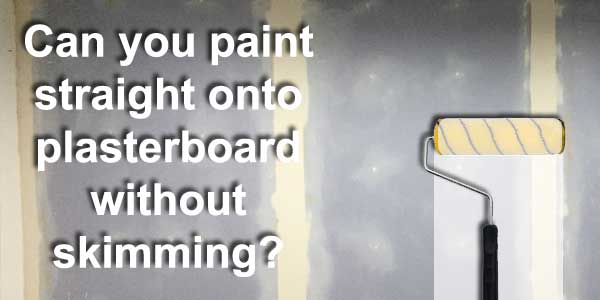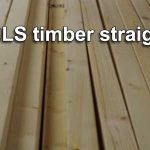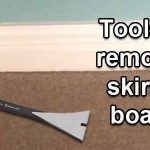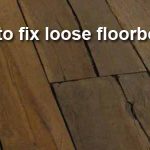OK, so you’ve installed plasterboard and now you are wondering how to finish it. The most common way to finish plasterboard, here in the UK, is to skim the surface with plaster.
By doing this, you achieve a flat smooth surface that is ready for decoration.
However, plasterers aren’t cheap and skimming a room will cost quite a bit of money. Especially if you need the walls and ceiling doing. If this is the case, you could be looking at anywhere from £250, up to £600+ depending on the size of the room.

In order to save money and speed up the job, many people will wonder, if you can just paint straight onto the plasterboard without skimming.
The good news, is you can paint directly onto the boards. However you will need to correctly seal and fill the surface. If you don’t fill all the joints and holes correctly, it will be very noticeable when the wall is painted.
Also, if you fail to seal and prime the wall prior to painting, the paint job will be low quality and there is a risk of it peeling and flaking right off the wall.
How to seal plasterboard before painting
When painting directly onto plasterboard, you first need to prime the surface. Plasterboard is extremely absorbent, it is essentially just gypsum, sandwiched in two layers of paper.
If you paint directly on to the surface, the boards will suck the moisture from the paint. This could result in a patchy finish, as well as poor adhesion to the surface.
Priming the surface can be done in two ways:
- Apply a mist coat – This can be done by diluting the paint by 3 parts paint and one part water. The extra moisture will be sucked into the board and reduce suction in your main topcoats.
- Use a drywall primer – This is usually quite expensive, but it will give a very good base for your topcoats of paint. A popular option is Drywall pro 2 in 1 from Zinsser. You can read more about that product by clicking here.
Both options will give the desired result. However, the primer is specifically designed for this purpose. Therefore it tends to do a slightly better job.
So, if you can afford the primer it is usually going to be the best choice. However, a decent mist coat will still do the job pretty good.
Either way, don’t skip this step. Yes it is an extra coat, and it will take extra time. However, the finish will be worth it, and you will have a paint job that stands the test of time.
Stop plasterboard joints showing up after painting
Plasterboard joints show after painting for a couple of reasons.
If the wall has been skimmed, then you need to talk with the plasterer that did the work. If the job has been done properly you shouldn’t be seeing lines. It indicates that the surface is not completely flat. This can be accentuated by paints with higher sheen, that catch the light more.
If you are painting straight onto plasterboard without skimming, you can have the same problems. The key to avoiding it, is to fill the joints well, and ensure they are sanded completely flat.
The best way to achieve this is with a tapered edged board. These are known as drylining boards, and they are specifically designed for this purpose. At the edge of the board, there is a small indent (a tapered edge).
When two of these boards are fixed next to each other, this forms a small channel with the joint in the middle. This channel can be filled with a drywall compound and some jointing tape. Once filled and finished, it can be sanded to a perfectly flat and seamless surface.
Also, the jointing tape that is applied, stops any cracks forming on the board joints.
As well as the joints, you will also need to fill every screw hole in the plasterboard. Again, this will be sanded to a smooth flat finish.
If you get this process right, the joints and fixings will be completely hidden once the boards are painted.
Filling butt joints
One thing that can cause problems is butt joints. These are joints that don’t have a tapered edge. You can usually avoid this with tapered edge boards, as they are 2.4 meters long. This is a pretty typical ceiling height throughout the country, so a board stood upright (floor to ceiling) should have no joints.
However, tapered edge boards are not tapered on all sides. The top and bottom of these boards have square edges. This means if a room has high ceilings, a butt joint may be unavoidable.
There is also a chance you boarded with standard plasterboard. If this is the case, all of the joints are butt joints.
Whatever the cause of your butt joints, the preparation before painting, is going to be the same. Essentially, you will need to tape the joints and then apply a thin layer of jointing compound. Something like Gyproc Easifill.
The goal is to create a thin, wide, tapered layer of filler that completely hides the joint.
This filler should be around 300mm wide, and only a couple of mm thick at the joint. Then it should be feathered out to nothing at the outside edges.
Once dried, this can be sanded and should give the illusion of a completely flat surface.
Obviously, this does require some skill. Therefore, if you haven’t boarded already, do yourself a favour and buy tapered edged boards. They are more expensive. However, they are specifically designed for this job. This means they are far easier to prep and achieve a high-quality finish.
Conclusion
You can definitely paint straight onto plasterboards without skimming. In fact countries like Australia, Canada and even America, rarely use wet plaster. Nearly all of there plastering is dry lining.
The key to achieving a good finish, is good prep. You need to make sure the wall is filled and jointed correctly. Then it needs to be sanded, so all the joints and fixings are completely hidden.
Following this it should be primed, and then it is ready to receive a couple of coats of paint to finish.
If you get the process right, by not rushing and cutting corners, you will end up with a very high-quality finish.




